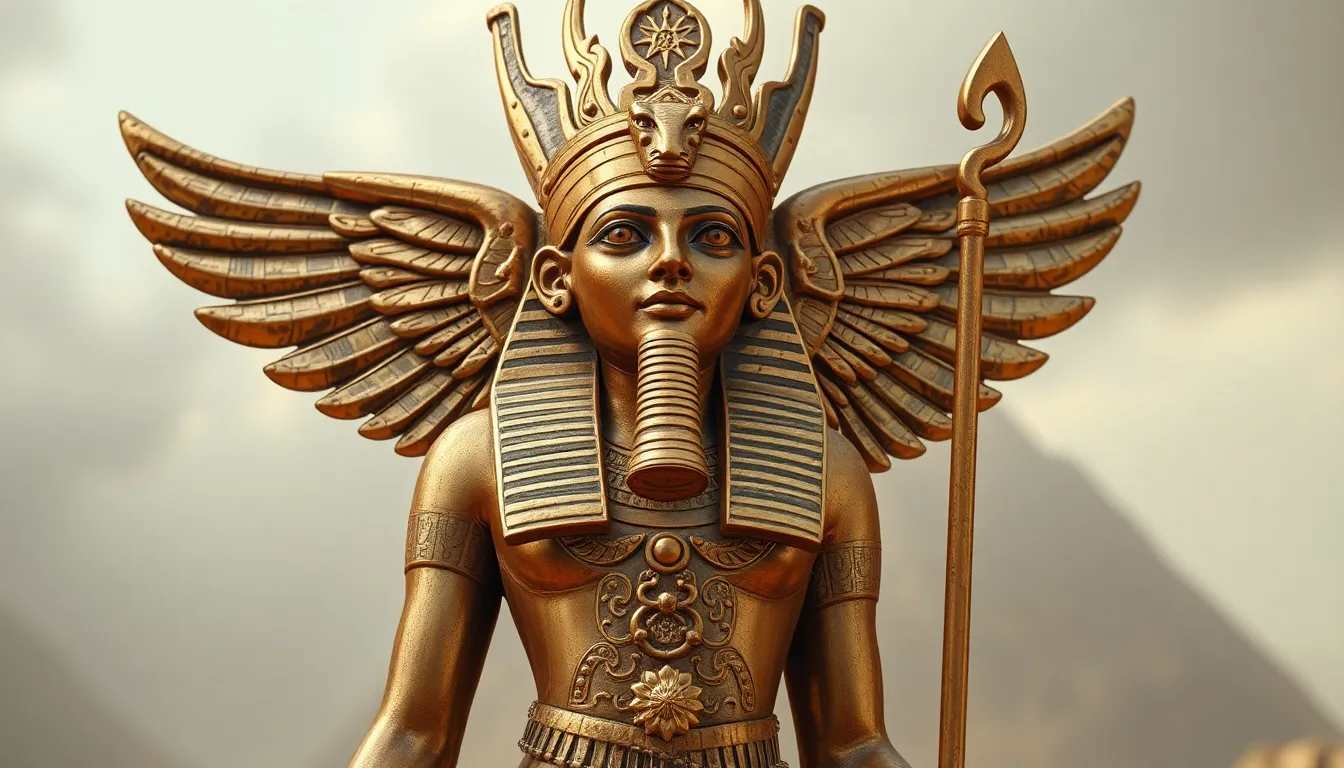The Role of the Goddess Tefnut in Egyptian Spirituality
I. Introduction
Tefnut, the ancient Egyptian goddess, holds a significant place in the rich tapestry of Egyptian mythology. Known primarily as the goddess of moisture and rain, she embodies essential aspects of creation and balance in the ancient world. This article aims to explore Tefnut’s roles and attributes, illuminating her importance in the spiritual landscape of ancient Egypt.
II. Origins and Mythological Background
Tefnut is a central figure in the Ennead of Heliopolis, a group of nine deities that includes her brother and counterpart, Shu, as well as other major gods like Geb and Nut. According to myth, Tefnut was born from the primordial waters of Nun, a chaotic void that existed before creation. Her birth symbolizes the emergence of order from chaos.
The duality between Tefnut and Shu is crucial to understanding her character. Together, they represent the fundamental dualities of life: moisture and air, femininity and masculinity. Their relationship underlines the harmony necessary for the sustenance of life.
III. Symbolism and Attributes of Tefnut
Tefnut is often depicted as a lioness or a woman with a lioness head, symbolizing both her fierce nature and her nurturing qualities. This dual representation emphasizes her role as a protector and provider. As the goddess of moisture, she is associated with rain and dew, vital for agriculture and the fertility of the land.
The meaning of her name, which translates to “spittle” or “to spit,” reflects her connection to moisture and the life-giving properties of water. This etymology highlights her essential role in the cyclical processes of nature.
IV. Tefnut’s Role in Creation Myths
In the creation myths of ancient Egypt, Tefnut plays a pivotal role in the formation of the world. As the goddess of moisture, she is crucial in the creation of the land, as water is necessary for life to flourish. Her relationship with Shu, the god of air, is instrumental in maintaining the balance between the two forces.
Tefnut and Shu are often depicted working together to separate the sky from the earth, a significant act of creation that establishes order in the universe. This balance is essential for the continuation of life, as the interplay of moisture and air creates the environment needed for growth.
V. Tefnut in Egyptian Rituals and Worship
Tefnut was honored in various temples and shrines throughout ancient Egypt, where her worship was an integral part of the spiritual life of the people. Significant temples dedicated to her can be found in locations such as Heliopolis, where she was venerated alongside other major gods.
- Rituals: Priests performed rituals to invoke Tefnut’s blessings for rain and fertility, essential for agriculture.
- Festivals: Celebrations were held to honor her, often coinciding with the rainy seasons, emphasizing her role in agricultural abundance.
VI. Tefnut’s Influence on Other Deities
Tefnut’s relationships with other deities in the Egyptian pantheon reflect her importance in the overall mythology. She is often depicted as the mother of Geb (the Earth) and Nut (the Sky), further establishing her role in the creation and maintenance of the world.
Her connection with Ra, the sun god, is also significant. Tefnut is sometimes seen as the moisture that nourishes the earth, which in turn supports the life that Ra brings through sunlight. This interconnectedness highlights the collaborative nature of the divine forces in Egyptian mythology.
VII. Tefnut in Art and Iconography
Tefnut’s image appears in various ancient artifacts, often characterized by her lioness head, which symbolizes strength and ferocity. In art, she is frequently shown alongside Shu, reinforcing their duality and partnership in creation.
In tombs and temples, Tefnut is portrayed in scenes depicting her role in the afterlife and in protection of the pharaohs. These representations emphasize her importance not only in life but also in the journey into the afterlife.
- Frescoes and Reliefs: Tefnut is often depicted in frescoes, engaged in acts of creation or alongside other deities.
- Statues: Statues of Tefnut were placed in temples, serving as focal points for worship and devotion.
VIII. Conclusion
Tefnut remains a vital figure in Egyptian spirituality, embodying the essential forces of moisture and balance. Her importance in creation myths, rituals, and relationships with other deities highlights her role as a key player in the ancient Egyptian understanding of the world.
As we reflect on Tefnut’s legacy, it becomes clear that her influence continues to resonate in contemporary interpretations of Egyptian mythology. The goddess Tefnut serves as a reminder of the interconnectedness of nature and the divine, an enduring symbol of life’s sustenance and balance.




